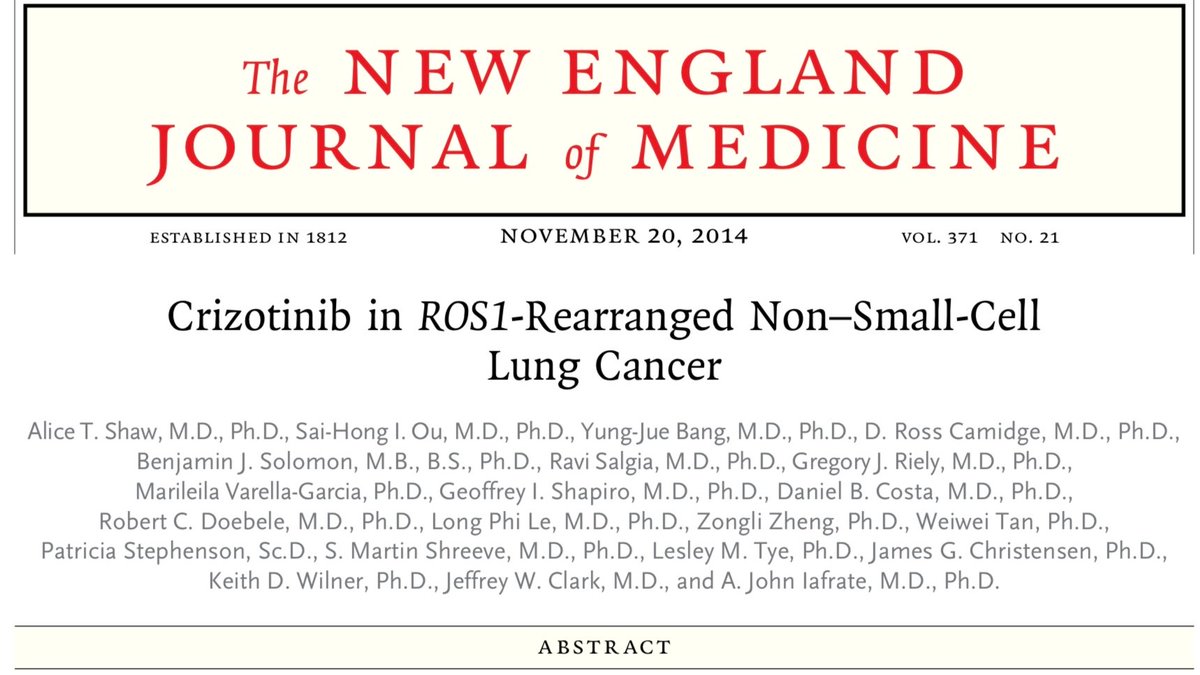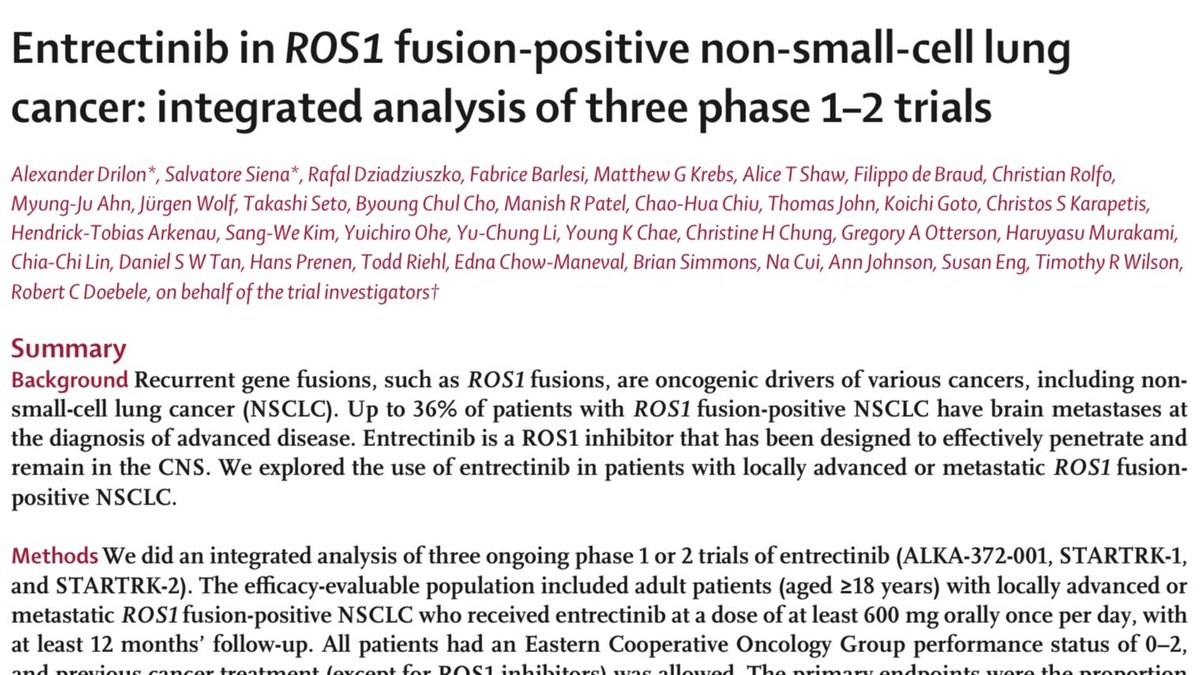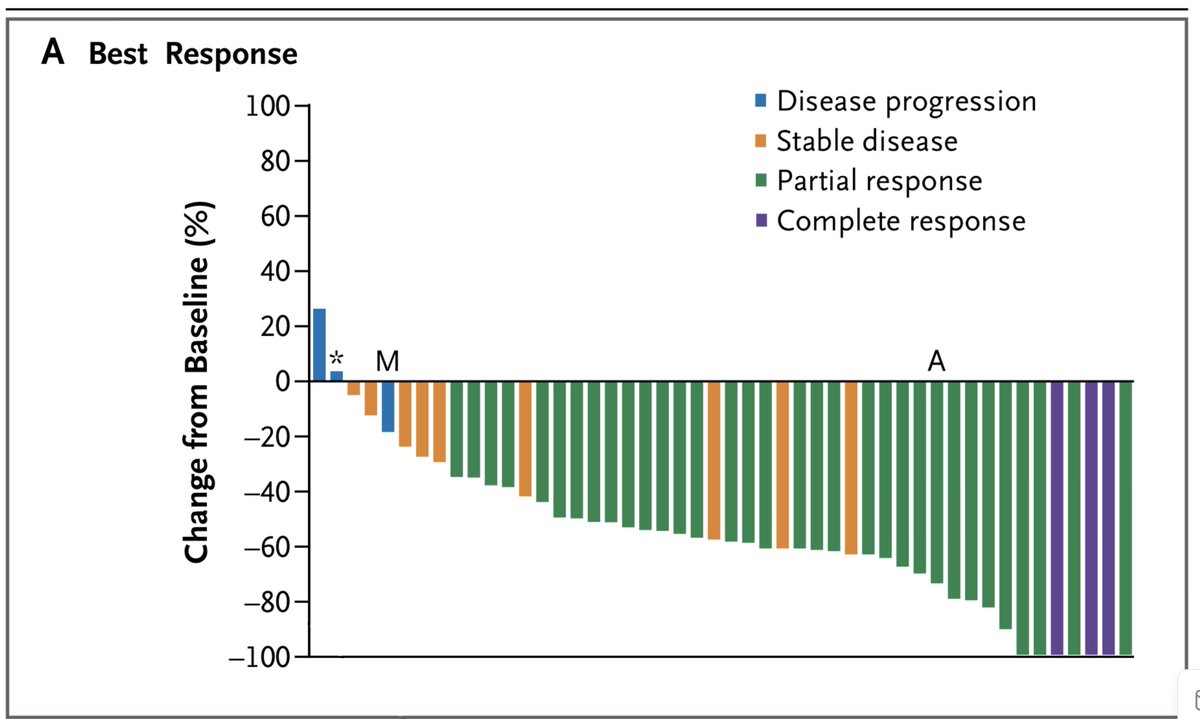
25 November: LACE meta-analysis
This year for Lung Cancer Awareness Month #LCAM I’m going to summarize 30 important lung cancer trials over 30 days. These posts are directed at non-medical professionals, with descriptions of the results and of what makes a good trial. #lcsm 1/12
This year for Lung Cancer Awareness Month #LCAM I’m going to summarize 30 important lung cancer trials over 30 days. These posts are directed at non-medical professionals, with descriptions of the results and of what makes a good trial. #lcsm 1/12
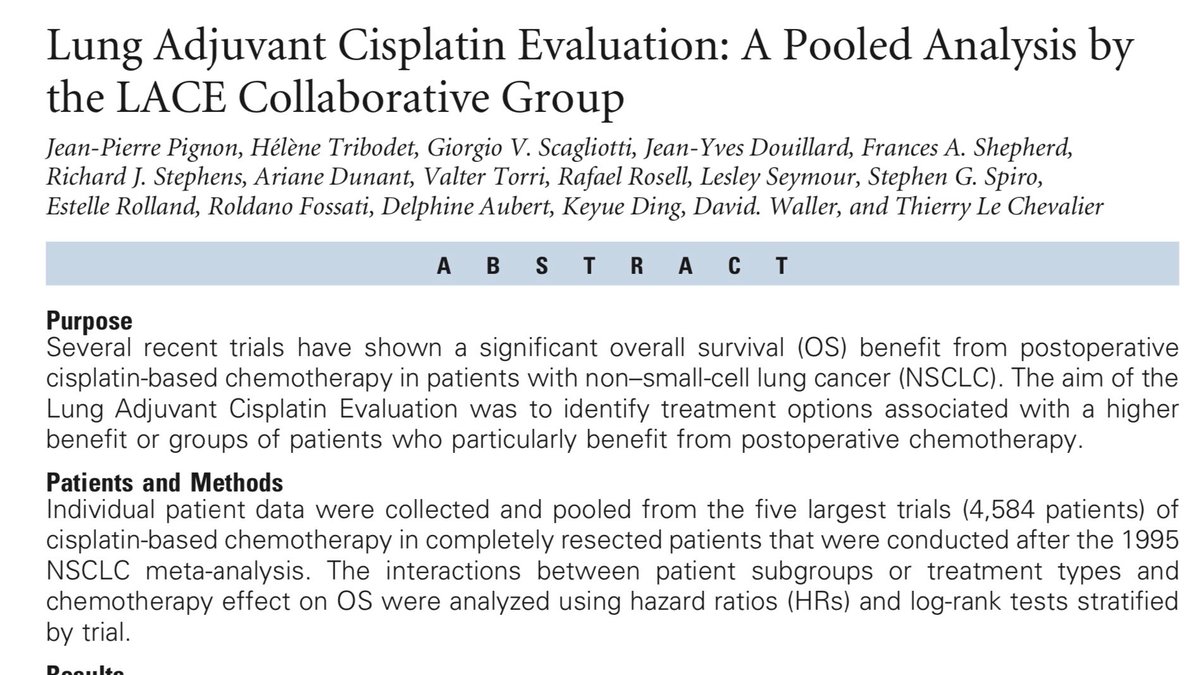
Throughout these summaries I have proposed that the randomized controlled trial is our most powerful form of evidence for the effectiveness of medical interventions. Today we’re going to look at a potentially stronger type of evidence: meta-analysis. 2/12
Meta-analysis is a systematic way of combining the results of several clinical trials that study the same question. Combining trials may give a larger sample size to elucidate subgroup effects, and may also highlight differences between trials. 3/12
Types of meta-anaysis
1. Individual patient: where data are available on individual patients in the studies
2. Aggregate Data: Using data from published reports
3. Network: Make comparisons not made in the studies (for instance comparing A and C using trials of A vs B and B vs C)
1. Individual patient: where data are available on individual patients in the studies
2. Aggregate Data: Using data from published reports
3. Network: Make comparisons not made in the studies (for instance comparing A and C using trials of A vs B and B vs C)
Today’s paper is the LACE meta-analysis, an individual patient analysis. Individual patient data aren’t published, so this type of analysis requires cooperation of trialists to share their data. The paper combines 5 trials of cisplatin-based adjuvant chemo (we reviewed one 2 Nov) 
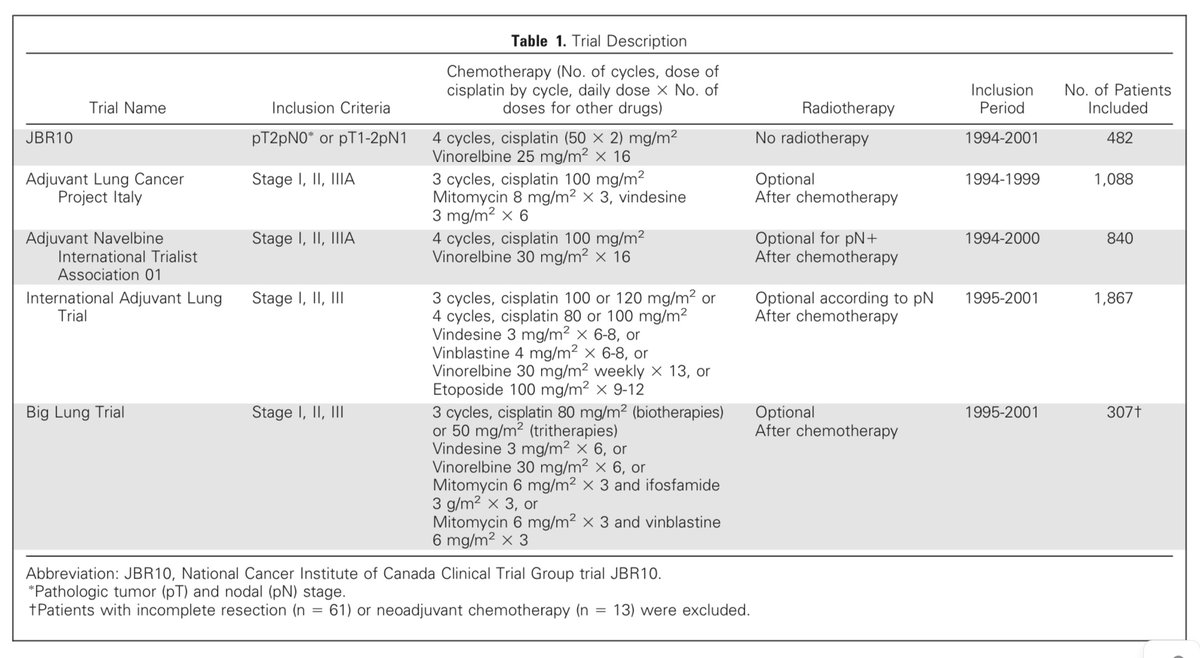
The analysis includes trials comparing adjuvant chemotherapy with cisplatin to no adjuvant chemo. Trials had to have enrolled >300 people, and been performed after 1995. These latter conditions are somewhat arbitrary. 6/12
The combined analysis had 4584 patients (the largest individual trial had 1867). It confirmed an improvement in overall survival with chemotherapy (HR 0.89 95% CI 0.82-0.96, p=0.005) corresponding to a 5.4% increase in survival at five years. 7/12 

Combining this large number of patients gave additional resolution to suggest that cisplatin/vinorelbine was the preferred doublet, and to confirm the impression that benefit is mainly in cancers that have spread to the lymph nodes (stage II and III at the time). 8/12 

The chart above is a forest plot. It shows numerous subgroup analyses.
Each blue box represents a group, with 95% CI on either side. Boxes to the left of the dotted line suggest benefit from chemo. Being left of the solid line suggests more benefit than average in the population.
Each blue box represents a group, with 95% CI on either side. Boxes to the left of the dotted line suggest benefit from chemo. Being left of the solid line suggests more benefit than average in the population.
A key element of meta-analysis is selection of trials. Combining poor-quality trials does not suddenly create high-quality data.
The literature is also full of meta-analyses wherein methodologic criteria seem to have been created solely to exclude trials with unpopular results.
The literature is also full of meta-analyses wherein methodologic criteria seem to have been created solely to exclude trials with unpopular results.
Meta-analyses occupy the highest point of the hierarchy of evidence, but they are rarely practice-changing in the way that trials can be.
The trial results are already known, & something would be wrong with an analysis coming to contrary conclusions from the trials comprising it.
The trial results are already known, & something would be wrong with an analysis coming to contrary conclusions from the trials comprising it.
Tomorrow we're going to consider immunotherapy in small cell lung cancer, and discuss some challenges that face negative studies, in particular. 12/12 

• • •
Missing some Tweet in this thread? You can try to
force a refresh



